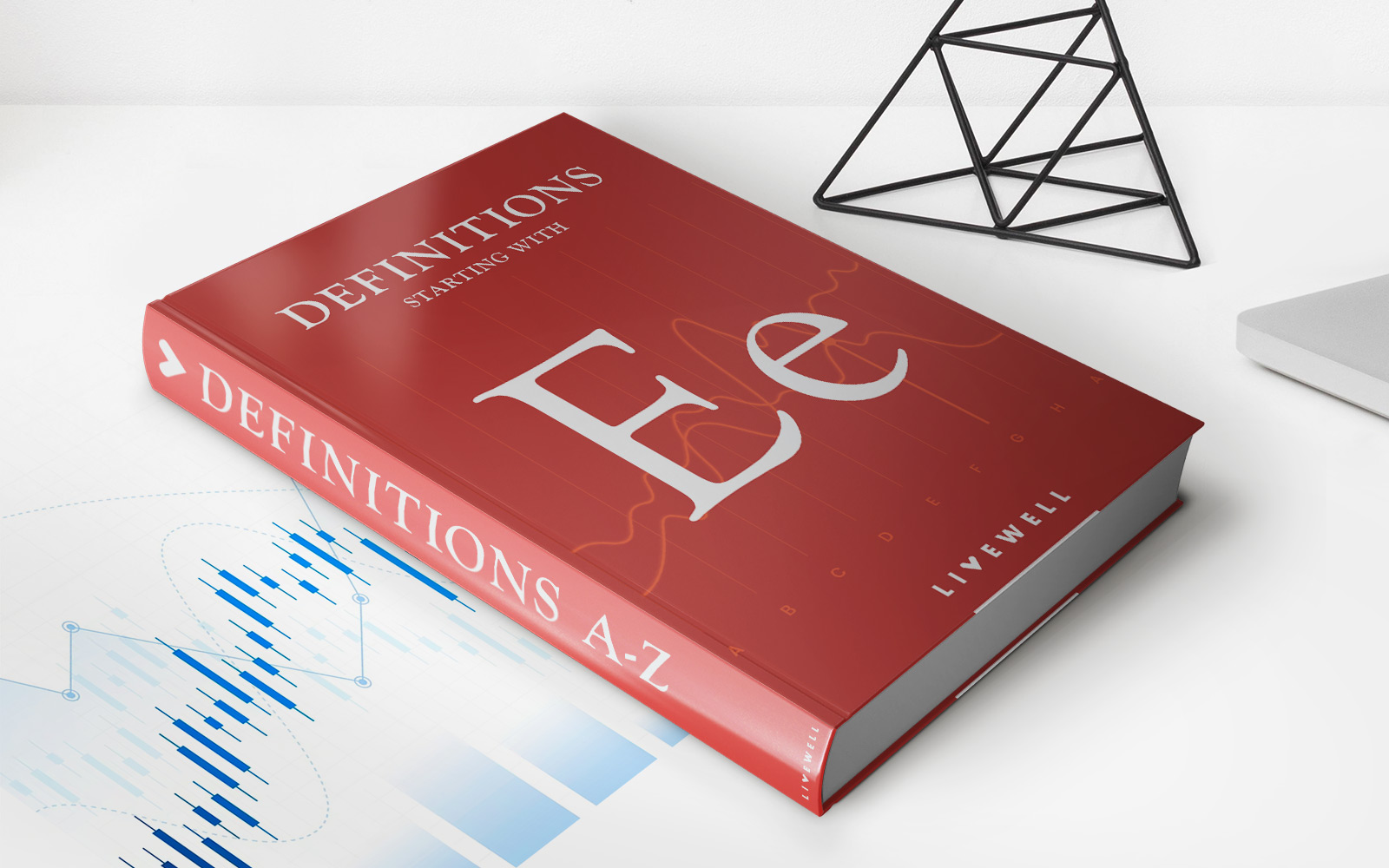

Finance
What Does Trade Finance Do
Published: January 21, 2024
Trade finance is a crucial aspect of finance that facilitates international trade and ensures smooth transactions between importers and exporters. Learn more about its functions and importance in the global economy.
(Many of the links in this article redirect to a specific reviewed product. Your purchase of these products through affiliate links helps to generate commission for LiveWell, at no extra cost. Learn more)
Table of Contents
- Introduction
- Definition of Trade Finance
- Functions of Trade Finance
- Financing Import Transactions
- Financing Export Transactions
- Risk Mitigation
- Trade Finance Instruments
- Letter of Credit
- Bank Guarantees
- Documentary Collections
- Trade Credit Insurance
- Trade Finance vs. Traditional Financing
- Advantages of Trade Finance
- Conclusion
Introduction
Trade finance plays a crucial role in facilitating international trade, allowing companies to conduct business across borders efficiently and securely. It involves various financial products and services that help importers and exporters mitigate the risks associated with cross-border transactions, while providing the necessary funding to support their trade activities.
In a globalized world, where companies are constantly seeking new markets to expand their businesses, trade finance becomes essential. It enables businesses to overcome the challenges of working with unfamiliar partners, navigating complex international regulations, and managing the inherent risks of international trade.
Trade finance encompasses a wide range of financial tools and techniques, including letters of credit, bank guarantees, documentary collections, and trade credit insurance. These instruments provide a safety net for both buyers and sellers, ensuring that payment obligations are met and goods are delivered as agreed.
Moreover, trade finance serves as an alternative or complementary option to traditional financing methods. While conventional financing focuses on the creditworthiness of the borrower, trade finance primarily considers the underlying transaction and the associated risks. This makes it particularly valuable for small and medium-sized enterprises (SMEs) that may have limited access to traditional financing channels.
This article will delve into the world of trade finance, exploring its definition, functions, and various instruments. We will also highlight the advantages of using trade finance in international business transactions. By the end, you will have a comprehensive understanding of how trade finance operates and how it can benefit your company.
Definition of Trade Finance
Trade finance refers to the financial instruments, products, and services that facilitate and support international trade transactions. It involves the provision of funds, guarantees, and insurance to help importers and exporters mitigate the risks associated with cross-border trade.
At its core, trade finance aims to bridge the gap between the time when a seller ships the goods and the buyer makes payment. The primary objective is to provide assurance to both parties involved in the transaction, ensuring that the seller receives payment for the goods and the buyer receives the goods as agreed.
Trade finance encompasses a wide range of activities, including financing imports and exports, managing risks, and facilitating the movement of goods across borders. It plays a vital role in enabling global trade by providing the necessary financial support and risk management tools.
One of the key aspects of trade finance is its focus on trade-specific risks. Unlike traditional financing, which primarily evaluates the creditworthiness of the borrower, trade finance assesses the underlying commercial transaction and associated risks. This approach allows companies to secure funding based on the quality of the trade deal, rather than solely relying on their financial standing.
In addition to financing, trade finance also includes various instruments that address the risks involved in international trade. These instruments can include letters of credit, bank guarantees, documentary collections, and trade credit insurance. Each serves a specific purpose in managing different types of risks and providing the necessary financial security.
Overall, trade finance acts as a facilitator, ensuring that importers and exporters can conduct business smoothly and securely. It provides the financial resources and risk mitigation tools necessary to navigate the complexities of international trade, fostering economic growth and driving global commerce.
Functions of Trade Finance
Trade finance serves several important functions in international trade, providing essential support to businesses engaged in cross-border transactions. These functions include financing import transactions, financing export transactions, and risk mitigation.
1. Financing Import Transactions: Trade finance helps importers secure the necessary funds to purchase goods from overseas suppliers. By providing access to financing options such as letters of credit or trade loans, importers can bridge the time gap between receiving the goods and making payment. This ensures smooth and timely shipment of goods, even when the buyer and seller are located in different countries.
2. Financing Export Transactions: On the other side of the equation, trade finance also assists exporters in receiving payment for their goods. Exporters can leverage trade finance instruments, such as letters of credit, to secure payment from buyers. This mitigates the risk of non-payment and allows exporters to focus on fulfilling orders and expanding their international customer base.
3. Risk Mitigation: International trade involves inherent risks, including non-payment, political instability, and transportation issues. Trade finance instruments help mitigate these risks and provide financial security to both buyers and sellers. For example, letters of credit provide assurance to exporters that they will be paid upon meeting the agreed-upon terms, while bank guarantees protect importers by ensuring that the seller fulfills their obligations. Additionally, trade credit insurance offers coverage in case of non-payment or insolvency by the buyer.
4. Trade Finance Instruments: Trade finance encompasses a range of instruments designed to facilitate international trade. These instruments include letters of credit, bank guarantees, documentary collections, and trade credit insurance. Each instrument serves a different purpose, catering to specific needs and risks in the trade transaction. These instruments provide certainty, security, and confidence to both parties involved, enabling them to complete transactions with reduced risk.
By fulfilling these functions, trade finance plays a vital role in enabling businesses to navigate the complexities of international trade. It ensures the smooth flow of goods and funds across borders, enhancing economic growth and fostering global trade relationships.
Financing Import Transactions
Importing goods from overseas suppliers is a common practice for businesses looking to expand their product offerings or access more competitive markets. However, financing these import transactions can be a challenge due to various factors such as payment terms, currency exchange, and creditworthiness of the buyer.
Trade finance provides importers with the means to secure the necessary funding to purchase goods from international suppliers. Here’s how it works:
1. Letters of Credit (LC): A letter of credit is a widely used trade finance instrument that provides importers with a guarantee of payment to their suppliers. In this arrangement, the buyer’s bank issues a letter of credit, assuring the supplier that payment will be made once the agreed-upon conditions are met, such as presenting the required shipping documents. This provides a level of trust and confidence to the supplier, ensuring seamless shipment of goods.
2. Trade Loans: Importers can also apply for trade loans to finance their import transactions. These loans are specifically designed for businesses involved in international trade and can provide short-term financing to cover the cost of purchasing goods. Trade loans often have flexible repayment terms and can be tailored to match the import cycle of the business.
3. Supplier Credit: In some cases, importers may negotiate with their suppliers to obtain supplier credit, which means the supplier extends payment terms beyond the standard period. This allows importers to receive the goods upfront and pay the supplier at a later date, easing cash flow constraints. However, it’s important to note that this option depends on the relationship and trust established with the supplier.
4. Factoring and Invoice Discounting: Importers can also utilize factoring or invoice discounting services to access immediate funds. These services involve selling their accounts receivable to a finance provider in exchange for a percentage of the invoice value. This allows importers to receive the funds upfront and transfer the responsibility of collecting payment to the finance provider.
Ultimately, the availability of financing options for import transactions through trade finance allows businesses to overcome financial barriers and seize opportunities in the global market. By providing access to funding, trade finance facilitates the smooth movement of goods across borders, enabling importers to meet customer demands and expand their product offerings.
Financing Export Transactions
Exporting goods to international markets presents a wealth of opportunities for businesses to reach new customers and increase revenue. However, financing export transactions can be challenging due to risks such as non-payment, currency fluctuations, and the need for working capital to fulfill orders. Trade finance offers various solutions to assist exporters in overcoming these challenges and ensuring seamless international trade.
Here are some ways in which trade finance can support financing export transactions:
1. Letters of Credit (LC): Letters of credit are commonly used in export transactions as they provide exporters with a payment guarantee. When a buyer opens a letter of credit, their bank promises to make payment to the exporter once the required documents are presented. This mitigates the risk of non-payment for exporters, giving them confidence to fulfill orders and ship goods.
2. Export Factoring: Export factoring allows exporters to receive immediate funds by selling their accounts receivable to a factoring company. This provides exporters with working capital to cover production costs, fulfill orders, and expand their export activities. The factoring company assumes responsibility for collections, relieving the exporter from the burden of chasing payment.
3. Export Credit Insurance: Export credit insurance offers protection to exporters against the risk of non-payment by buyers or insolvency. In the event of non-payment, the insurance company provides compensation, ensuring that exporters do not suffer financial losses. This allows exporters to confidently extend credit terms to buyers and explore new markets without the fear of non-payment.
4. Pre-shipment and Post-shipment Financing: Exporters may require financing at different stages of the export process. Pre-shipment financing allows exporters to fund production and prepare goods for shipping, including raw material procurement and manufacturing costs. Post-shipment financing provides exporters with working capital to bridge the gap between shipment and payment receipt, ensuring smooth cash flow during the export cycle.
Trade finance solutions for exporters ultimately facilitate the expansion of international trade by providing financial support and risk mitigation. By accessing financing options and securing payment guarantees, exporters can confidently pursue new business opportunities, fulfill customer orders, and navigate the complexities of international markets.
Risk Mitigation
International trade involves various risks that can impact the success of a transaction. These risks include non-payment, political instability, currency fluctuations, and transportation issues. Trade finance plays a crucial role in mitigating these risks and providing financial security to both buyers and sellers. Here are some ways in which trade finance helps minimize risk in international trade:
1. Letters of Credit (LC): Letters of credit offer a secure payment method for both importers and exporters. By using a letter of credit, the buyer’s bank guarantees payment to the exporter upon the presentation of the required documents. This ensures that the exporter will be paid for their goods, minimizing the risk of non-payment or late payment.
2. Bank Guarantees: Bank guarantees provide a form of financial security to both buyers and sellers. A bank guarantee is a commitment made by a bank to reimburse the recipient if the other party fails to fulfill their obligations. This helps protect the parties involved from potential losses and gives them confidence to proceed with the transaction.
3. Documentary Collections: Documentary collections are another risk mitigation tool in trade finance. In this process, the exporter’s bank collects payment on behalf of the exporter by presenting the shipping documents to the buyer’s bank. This ensures that the buyer cannot take possession of the goods without making payment, lowering the risk of non-payment.
4. Trade Credit Insurance: Trade credit insurance provides protection against the risk of non-payment or insolvency by buyers. If a buyer fails to pay or becomes insolvent, the insurance company reimburses the exporter for the loss. This gives exporters peace of mind and allows them to extend credit terms to buyers in new markets without the fear of non-payment.
By utilizing these risk mitigation tools and techniques, trade finance helps create a more secure and predictable environment for international trade. It provides financial protection, ensuring payment for goods and reducing the negative impact of various risks that can arise during cross-border transactions.
Trade Finance Instruments
Trade finance offers a range of instruments that facilitate and secure international trade transactions. These instruments provide financial security and reduce the risks associated with cross-border trade. Here are some of the key trade finance instruments:
1. Letters of Credit (LC): Letters of credit are a widely used trade finance instrument that guarantees payment to the exporter. It involves a commitment from the buyer’s bank to pay the exporter upon the presentation of complying documents. This provides assurance to the exporter that they will be paid, while also giving the buyer confidence that their payment will only be made once certain conditions are met.
2. Bank Guarantees: Bank guarantees are financial instruments issued by banks that ensure payment to the beneficiary if the other party fails to meet their obligations. These instruments provide a level of security to both buyers and sellers, protecting them from potential losses due to non-performance or payment defaults.
3. Documentary Collections: Documentary collections involve the exchange of shipping and payment documents through banks. The exporter presents the documents to their bank, which forwards them to the buyer’s bank. The buyer can only access the documents once payment is made or a commitment to pay is provided. This instrument offers a simplified and cost-effective payment method, while ensuring that the buyer cannot take possession of the goods without making payment.
4. Trade Credit Insurance: Trade credit insurance protects exporters against the risk of non-payment or insolvency by buyers. It provides coverage for losses incurred due to buyer default, political risks, or economic instability. With this insurance, exporters can confidently extend credit terms to buyers and explore new markets, knowing that they are protected against potential losses.
5. Export Finance: Export finance refers to various financial products and services specifically designed to address the needs of exporters. These include pre-shipment and post-shipment financing, factoring, and invoice discounting. Export finance provides working capital and funding options to exporters, ensuring they have the necessary resources to fulfill orders and expand their export activities.
These trade finance instruments serve to facilitate international trade, mitigate risks, and ensure smooth transactions between buyers and sellers. By leveraging these instruments, businesses can navigate the complexities of global trade with confidence and unlock new opportunities in the international market.
Letter of Credit
A letter of credit (LC) is one of the most commonly used trade finance instruments, providing security and assurance in international trade transactions. It is a written commitment by a bank, issued on behalf of a buyer (applicant) and addressed to a seller (beneficiary), ensuring that payment will be made upon the completion of specified conditions.
Here’s how a letter of credit works:
1. Issuance: The buyer and seller agree to use a letter of credit as the payment method for their transaction. The buyer’s bank, known as the issuing bank, issues the letter of credit, which outlines the payment terms, shipping documents required, and other conditions agreed upon by the parties involved.
2. Presentation of Documents: The seller ships the goods to the buyer and prepares the necessary shipping and payment documents as specified in the letter of credit. These documents typically include a commercial invoice, bill of lading, packing list, insurance certificate, and any other documents required by the letter of credit.
3. Examination and Compliance: The seller submits the documents to their bank, known as the advising bank, which then forwards them to the issuing bank. The issuing bank examines the documents to ensure they comply with the terms and conditions of the letter of credit. If the documents meet the requirements, the buyer’s bank will make payment to the seller.
4. Payment to the Seller: Once the documents are deemed compliant, the issuing bank transfers the agreed-upon payment to the seller’s bank account. The issuing bank, acting on behalf of the buyer, assumes the responsibility of making payment to the seller, providing a level of guarantee and security.
Letters of credit offer several advantages in international trade, both for buyers and sellers:
1. Payment Security: Letters of credit provide security for sellers by guaranteeing payment upon document compliance. This reduces the risk of non-payment and provides financial confidence in carrying out international transactions.
2. Assurance for Buyers: Buyers can use letters of credit to ensure that the seller meets specific conditions before payment is made. This may include verifying the quality, quantity, or condition of the goods before accepting them and releasing payment.
3. International Acceptance: Letters of credit are widely accepted in international trade, making them a trusted and recognized payment method among global traders. The involvement of reputable banks enhances the credibility and reliability of the transaction.
4. Potential Financing Option: Letters of credit can also be used as collateral to secure financing from banks. Sellers can utilize the letter of credit as a financial tool to access working capital or obtain trade finance solutions.
However, it is crucial for both buyers and sellers to thoroughly understand the terms and conditions outlined in the letter of credit to ensure compliance and avoid any potential discrepancies or delays in payment.
In summary, a letter of credit is a valuable trade finance instrument that provides security, assurance, and smooth payment processes in international trade transactions. It helps to mitigate the risks associated with cross-border trade and fosters trust and confidence between parties involved.
Bank Guarantees
Bank guarantees are a widely used trade finance instrument that provides financial security and assurance to parties involved in a transaction. Essentially, a bank guarantee is a commitment made by a bank on behalf of a buyer (or sometimes a seller), ensuring payment or performance in the event that the buyer (or seller) fails to fulfill their obligations.
Bank guarantees can take various forms depending on the specific requirements of the transaction. Here are some common types of bank guarantees:
1. Payment Guarantee: A payment guarantee is issued by a bank to guarantee the payment made by the buyer to the seller. In the event that the buyer fails to make payment, the bank will step in and fulfill the payment obligation on behalf of the buyer.
2. Performance Guarantee: A performance guarantee is used to ensure that a party fulfills the obligations stated in a contract or agreement. If the party fails to perform or meet the agreed-upon terms, the bank will compensate the non-performing party or the aggrieved party as specified in the guarantee.
3. Bid or Tender Guarantee: This type of guarantee is commonly used in procurement processes where a buyer requests bids or tenders from multiple suppliers. The bank guarantee assures the buyer that the bidder will enter into a contract if their bid is accepted and will provide the required performance guarantee upon winning the bid.
4. Advance Payment Guarantee: An advance payment guarantee is issued to the buyer’s bank to ensure the repayment of any advance payments made to the seller. It safeguards the buyer’s funds and provides recourse in case the seller fails to deliver the goods or services as agreed.
Bank guarantees offer several advantages for both buyers and sellers:
1. Financial Security: Bank guarantees provide financial security to both parties involved in the transaction. The party receiving the guarantee is assured of payment or performance, while the party providing the guarantee benefits from a higher level of trust and credibility.
2. Risk Mitigation: Bank guarantees mitigate various risks associated with trade transactions, such as non-performance, non-payment, or insolvency. They provide an additional layer of protection, ensuring that the party protected by the guarantee will be compensated in case of default.
3. Global Acceptance: Bank guarantees are widely recognized and accepted in international trade. Due to the involvement of reputable banks, the guarantee is considered a reliable commitment, enhancing the credibility and trustworthiness of the transaction.
4. Flexibility: Bank guarantees can be tailored to meet the specific requirements of the transaction. They can be customized to cover different types of risks and provide specific payment or performance obligations, offering flexibility to parties involved.
It is important to note that bank guarantees typically involve fees charged by the bank issuing the guarantee, and the terms and conditions of the guarantee should be carefully reviewed and understood by the parties involved.
In summary, bank guarantees provide financial security, risk mitigation, and greater confidence in trade transactions. They serve as essential trade finance instruments, supporting buyers and sellers in various commercial arrangements by ensuring payment or performance in a reliable and secure manner.
Documentary Collections
Documentary collections are a trade finance instrument widely used in international trade transactions. Unlike letters of credit or bank guarantees, which involve a bank guaranteeing payment or performance, documentary collections are a simpler and less expensive option for buyers and sellers to ensure the secure exchange of goods and payment.
In documentary collections, the exporter instructs their bank (the remitting bank) to forward shipping documents to the importer’s bank (the collecting bank) in exchange for payment or acceptance of a bill of exchange. The documents are released to the buyer upon payment or acceptance, allowing them to take possession of the goods.
Here’s how a documentary collection process typically works:
1. Exporter’s Instructions: The exporter and importer agree to use documentary collections as the payment method for their trade transaction. The exporter provides instructions to their bank regarding the required documents and payment terms.
2. Shipment and Document Preparation: The exporter ships the goods to the buyer and prepares the necessary shipping and payment documents as per the agreed terms. These documents may include a commercial invoice, bill of lading, packing list, insurance certificate, and other specific documents necessary for the transaction.
3. Submission to Remitting Bank: The exporter presents the shipping documents to their bank, the remitting bank, with instructions to send them to the importer’s bank, the collecting bank, along with the payment instructions or a bill of exchange.
4. Presentation to Importer: The collecting bank receives the documents and payment instructions from the remitting bank. They notify the buyer (importer) about the arrival of the documents and the payment or acceptance obligations. The buyer can review the documents and decide whether to make payment or accept the bill of exchange.
5. Payment or Acceptance: The buyer makes payment to the collecting bank as instructed, or they accept the bill of exchange, which represents a commitment to pay at a later date. Once the payment is received or the bill of exchange is accepted, the collecting bank releases the documents to the buyer, allowing them to take possession of the goods.
Documentary collections offer certain benefits for both buyers and sellers:
1. Simplicity and Cost-Effectiveness: Documentary collections are relatively simpler and less expensive compared to other trade finance instruments. They involve a straightforward process without the need for complex guarantees or strict compliance requirements.
2. Control and Transparency: Documentary collections provide control and transparency to both parties. The buyer can examine the shipping documents before making payment or accepting the bill of exchange, while the seller retains control over the goods until payment or acceptance is received.
3. International Acceptance: Documentary collections are widely accepted and recognized in international trade. They offer a trusted and recognized payment method, making them an attractive option for buyers and sellers around the world.
It is essential for both parties to clearly communicate and agree upon the terms and instructions related to the documentary collection to ensure a smooth and secure transaction.
In summary, documentary collections provide a straightforward and cost-effective payment method in international trade transactions. They offer simplicity, control, and transparency, making them a viable alternative to more complex and expensive trade finance instruments like letters of credit or bank guarantees.
Trade Credit Insurance
Trade credit insurance is a risk management tool that provides protection to businesses against the risk of non-payment or insolvency by buyers. It offers coverage for losses incurred due to buyer default, political risks, or economic instability in domestic and international trade transactions.
Here’s how trade credit insurance works:
1. Policy Coverage: A business purchases a trade credit insurance policy from an insurance company, which provides coverage for a specified amount or percentage of sales made on credit terms. The policy may include coverage against non-payment, protracted default, insolvency, or certain political risks that could impact the buyer’s ability to pay.
2. Risk Assessment: The insurance provider assesses the creditworthiness of the buyer to determine the level of risk involved in extending credit. This evaluation helps the insurance company decide on the terms of coverage, including the maximum amount insured and the deductible.
3. Policy Activation: When a business makes a sale on credit terms, they notify the insurance provider about the transaction. The insurance company analyzes the buyer’s creditworthiness and either approves the credit limit requested or provides a recommended limit based on their assessment.
4. Claims and Settlement: If the buyer fails to pay within the agreed-upon credit period or becomes insolvent, the insured business can file a claim with the insurance company. The insurance provider then reimburses the insured for the covered amount lost due to non-payment or insolvency.
5. Policy Renewal and Premiums: Trade credit insurance policies are typically renewed annually. The insurer may adjust the premium based on factors such as the policyholder’s claims history, changes in sales volume or credit terms, or modifications in customer base or geographic scope.
Trade credit insurance offers several benefits to businesses engaged in domestic and international trade:
1. Protection against Bad Debts: Trade credit insurance safeguards businesses from the financial impact of non-payment or insolvency by buyers. It ensures that businesses can recover a significant portion of the covered losses, minimizing the impact on their cash flow and financial stability.
2. Enhanced Credit Management: By leveraging trade credit insurance, businesses can access valuable insights and credit risk assessments of their customers. This enables them to make informed decisions about extending credit terms, setting appropriate credit limits, and managing their customer relationships effectively.
3. Expanded Market Opportunities: Trade credit insurance provides businesses with the confidence to offer credit terms to new customers or explore new markets. It mitigates the risks associated with unfamiliar buyers and allows businesses to expand their customer base and sales opportunities.
4. Improved Financing Options: Trade credit insurance can enhance a business’s ability to secure financing from lenders. It provides additional reassurance to lenders that the business’s accounts receivable are protected, making it easier to access working capital or credit facilities.
In summary, trade credit insurance offers businesses protection against the risks of non-payment and insolvency. It improves financial security, credit management, and market expansion opportunities, allowing businesses to navigate the uncertainties of trade with confidence.
Trade Finance vs. Traditional Financing
Trade finance and traditional financing are two distinct approaches to funding business activities, each with its own characteristics and suitability for different situations. Understanding the differences between the two can help businesses choose the most appropriate financing method for their specific needs. Here’s a comparison between trade finance and traditional financing:
1. Focus: Trade finance primarily focuses on the underlying transaction, such as the import or export of goods. It assesses the risks associated with the transaction rather than solely relying on the borrower’s creditworthiness. Traditional financing, on the other hand, revolves around the borrower’s financial position, credit history, and ability to repay the loan.
2. Collateral: Traditional financing often requires collateral, such as real estate, equipment, or inventory, to secure the loan. Trade finance, however, typically relies on the underlying transaction and associated documents as collateral. The transaction itself serves as the primary source of security.
3. Financing Structure: In traditional financing, loans are typically structured as term loans or lines of credit, with a predetermined repayment schedule and interest rate. Trade finance offers more flexible and tailored financing options, such as letters of credit, factoring, or trade loans, designed to match the specific needs and duration of trade transactions.
4. Risk Assessment: Traditional financing heavily relies on credit assessment, analyzing the borrower’s financial statements, credit history, and financial ratios. Trade finance assesses the creditworthiness of the buyer and the risks associated with the transaction, looking at factors such as the quality of goods, shipping and delivery terms, and trade partners’ reputation.
5. International Perspective: Trade finance specifically caters to the needs of businesses engaged in international trade. It addresses the complexities of dealing with foreign currencies, cross-border transactions, and inherent risks associated with international trade. Traditional financing is more general and applicable to both domestic and international business operations.
6. Access for SMEs: Trade finance often provides more accessible financing options for small and medium-sized enterprises (SMEs) compared to traditional financing. SMEs may face challenges in accessing traditional financing due to limited collateral or credit history. Trade finance considers the underlying transaction and may provide financing based on the quality of the trade deal.
7. Cost and Fees: The cost structure varies between trade finance and traditional financing. Traditional financing often includes interest charges, origination fees, and other administrative costs. Trade finance may involve fees for services such as letter of credit issuance or trade credit insurance, but the overall costs can be lower due to the reduced reliance on collateral and the transaction-focused approach.
Ultimately, the choice between trade finance and traditional financing depends on the specific circumstances, needs, and goals of the business. Businesses involved in international trade may find trade finance more suitable due to its flexibility, risk mitigation, and tailored financing options, while traditional financing can offer more general financing solutions for a wide range of business activities.
Advantages of Trade Finance
Trade finance offers numerous advantages for businesses engaged in international trade. Whether it’s importing goods, exporting products, or mitigating risks, trade finance provides valuable solutions that enhance the efficiency and profitability of global trade. Here are some of the key advantages of utilizing trade finance:
1. Access to Working Capital: Trade finance provides businesses with access to the necessary working capital to fund their trade activities. It bridges the time gap between the payment to suppliers and the receipt of payment from buyers, ensuring a smooth cash flow. This enables businesses to fulfill orders, purchase raw materials, and meet their financial obligations without being hindered by cash flow constraints.
2. Risk Mitigation: International trade involves various risks, including non-payment by buyers, political instability, and transportation issues. Trade finance instruments, such as letters of credit and bank guarantees, help mitigate these risks by providing financial security and ensuring payment or performance. Trade credit insurance also protects against buyer default or insolvency, reducing the impact of potential losses.
3. Expand Market Opportunities: Trade finance facilitates expansion into new markets by mitigating the risks associated with unfamiliar buyers or foreign markets. With the assurance of payment through trade finance instruments, businesses can confidently engage with new customers and explore untapped markets, expanding their customer base and revenue streams.
4. Enhance Supplier Relationships: Trade finance strengthens relationships with suppliers by providing prompt payment for goods or services. Importers can use trade finance instruments, such as letters of credit, to provide assurance of payment to their suppliers. This fosters trust and credibility between buyers and sellers, leading to more favorable terms, increased reliability, and improved supply chain efficiency.
5. Improve Cash Flow and Liquidity: By utilizing trade finance solutions, businesses can optimize their cash flow and liquidity. The ability to secure financing or guarantee payment under trade finance arrangements allows businesses to release trapped capital, reduce dependency on internal funding sources, and allocate resources more effectively across their operations.
6. Boost Credit Worthiness: Successfully utilizing trade finance instruments and effectively managing trade transactions can improve a business’s creditworthiness. Timely payments and a strong trade performance can enhance credit ratings, potentially leading to better terms and conditions for future financing and trade agreements.
7. Flexibility and Tailored Solutions: Trade finance offers a range of flexible and tailored solutions to meet the specific needs of businesses engaged in international trade. Whether it’s financing import or export transactions, managing risks, or obtaining trade credit insurance, trade finance instruments can be customized to match the unique requirements of each transaction.
In summary, trade finance brings substantial benefits to businesses involved in international trade. It provides access to working capital, mitigates risks, expands market opportunities, strengthens supplier relationships, improves cash flow and liquidity, boosts creditworthiness, and offers flexibility in financing options. By utilizing trade finance effectively, businesses can optimize their global trade operations, minimize risks, and maximize their growth potential.
Conclusion
Trade finance plays a critical role in facilitating international trade by providing financial support, risk mitigation, and security to businesses engaged in cross-border transactions. It offers a wide range of instruments and solutions tailored to the unique needs of importers and exporters, enabling them to navigate the complexities of global trade with confidence.
The advantages of trade finance are numerous. It provides access to working capital, ensuring smooth cash flow and allowing businesses to fulfill orders and expand their operations. By offering risk mitigation tools such as letters of credit and trade credit insurance, trade finance protects businesses against non-payment, political instability, and other trade-related risks.
Trade finance also enhances market opportunities, enabling businesses to explore new markets, expand their customer base, and strengthen supplier relationships. It promotes better cash flow management, liquidity, and creditworthiness, improving overall financial operations.
Moreover, trade finance offers flexibility and tailored solutions, allowing businesses to customize their financing arrangements to meet the specific requirements of each trade transaction. With trade finance, businesses can optimize their operations, minimize risks, and unlock growth potential in the global marketplace.
In conclusion, trade finance provides a crucial framework for businesses to engage in international trade with confidence. By leveraging the various trade finance instruments and solutions available, businesses can overcome financial barriers, mitigate risks, and seize new opportunities in the dynamic and interconnected world of global trade.
Whether it is financing import or export transactions, managing risks, or obtaining trade credit insurance, trade finance offers valuable support and resources. It continues to be an indispensable tool for businesses seeking growth and success in the global marketplace. Embracing trade finance will empower businesses to thrive in the ever-evolving landscape of international trade.













